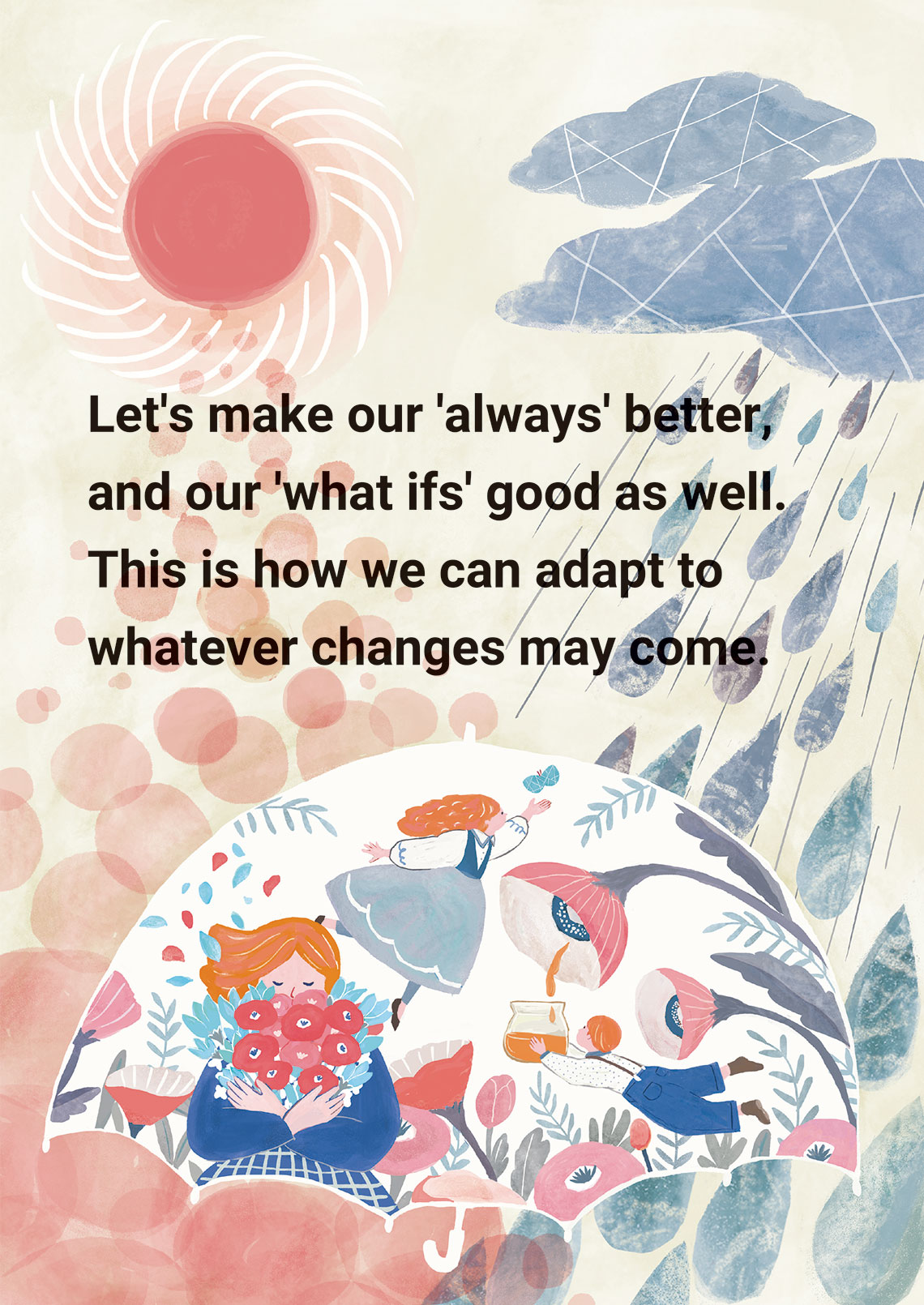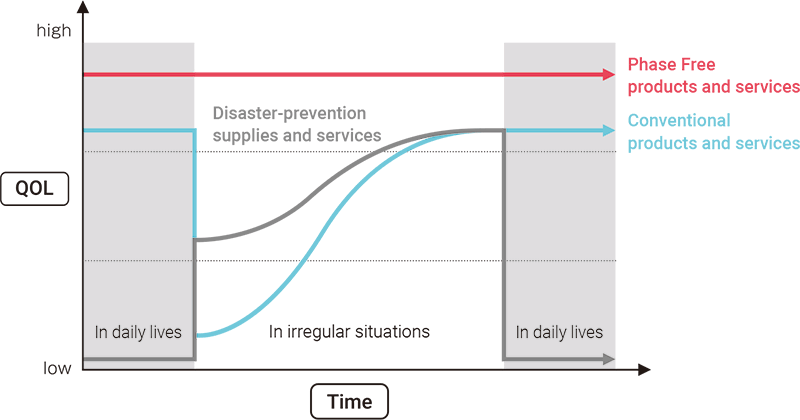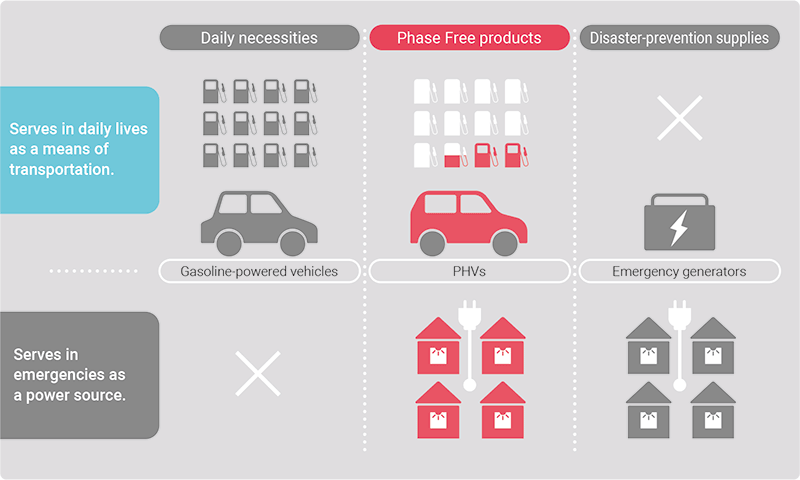06 Our lives and society protected by Phase Free

The Phase Free approach enhances our overall quality of life.
The daily necessities that we routinely use demonstrate their value primarily in our everyday lives. However, their value drops like a rock when a disaster strikes, or an irregular situation suddenly occurs. In contrast, disaster-prevention supplies demonstrate value in emergencies but are useless in everyday life and can be financially burdensome with not enough space to store them. Unlike these daily necessities and disaster-prevention supplies, Phase Free goods and services that are useful in our everyday lives are able to support our livelihoods and lives in irregular situations without having to be modified. This makes it possible to continue raising our overall quality of life without having to lower the quality of life in irregular situations.
The Phase Free concept
is all about the value in
both daily lives and
irregular situations.

Convenient for our 'always'. Useful for our 'what ifs'.
These goods and services protect livelihood and society, despite harsh environments caused by climate change.
A feature of Phase Free goods and services is their ability to be used across a wide range of situations, in both daily lives and irregular situations. For example, a plug-in hybrid vehicle (PHV) enhances quality of life over a conventional gasoline-powered vehicle in the context of daily lives by offering such value as economical fuel efficiency and a reduced environmental impact through energy-saving gains. In an emergency, its motor and batteries can be used to generate and store electricity to support life in an emergency and as a source of electricity in a power outage. In this way, harnessing Phase Free products and services that provide value in both daily lives and emergencies allows us to live comfortably and flexibly adapt to the harsh environmental changes brought about by climate change.
Phase Free products have
already begun to play
an active part in
our everyday lives.

PHVs can draw their motive power from two sources: an internal combustion engine and an electric motor.
It can use gasoline to generate electricity and also recharge from an external source.

